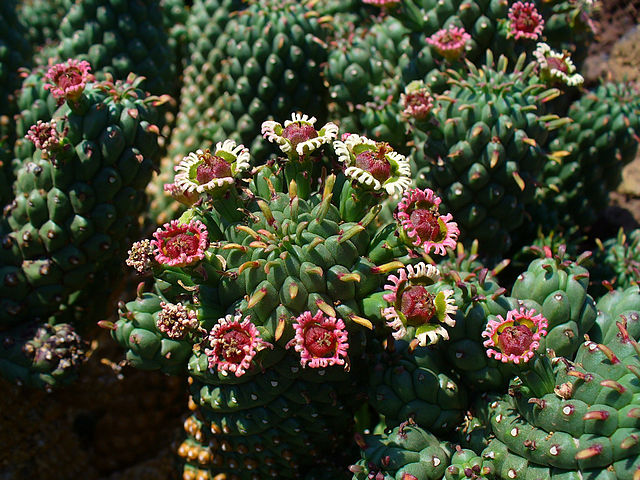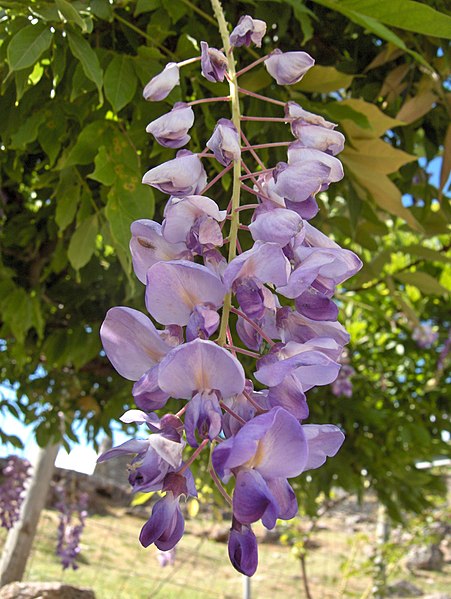A pseudanthium is an inflorescence that resembles a flower. The word is sometimes used for other structures that are neither a true flower nor a true inflorescence. Examples of pseudanthia include flower heads, composite flowers, or capitula, which are special types of inflorescences in which anything from a small cluster to hundreds or sometimes thousands of flowers are grouped together to form a single flower-like structure. Pseudanthia take various forms. The real flowers are generally small and often greatly reduced, but the pseudanthium itself can sometimes be quite large.
What appear to be "petals" of an individual flower, are actually each individual complete ray flowers, and at the center is a dense pack of individual tiny disc flowers. Because the collection has the overall appearance of a single flower, the collection of flowers in the head of this sunflower is called a pseudanthium or a composite.
Peace Lily (Spathiphyllum cochlearispathum) pseudanthium
compressed pseudanthia of Lepironia articulata
Euphorbia caput-medusae 01
An inflorescence, in a flowering plant, is a group or cluster of flowers arranged on a stem that is composed of a main branch or a system of branches. An inflorescence is categorized on the basis of the arrangement of flowers on a main axis (peduncle) and by the timing of its flowering.
Aloe hereroensis, showing inflorescence with branched peduncle
Amorphophallus titanum has the world's largest unbranched inflorescence. Photo of the plant in bloom in 2000 at Fairchild Tropical Botanic Garden in Miami, Florida, US
Ebracteate inflorescence of Wisteria sinensis
Bracteate inflorescence of Pedicularis verticillata.








